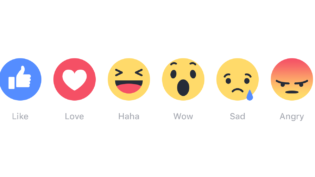Last year, the Canadian government passed a law, the Online Information Act, this would force platforms like Google and Meta to pay publishers for links to their content. Rather than pay, Meta deleted the information from Facebook and Instagram in Canada.
“News links and content published by news publishers and broadcasters in Canada will no longer be visible to citizens of Canada,” Meta said.
A few months later, Canadian users seem to be doing pretty well with a no-news meta, while publishers have suffered, according to a pre-printed paper produced by The Media Ecosystem Observatorya collaboration between McGill and the University of Toronto.
“We expected that the disappearance of information on Meta platforms would cause a major shock to the Canadian information ecosystem,” the newspaper writes. authors — Sara Parker, Saewon Park, Zeynep Pehlivan, Alexei Abrahams, Mika Desblancs, Taylor Owen, Jennie Phillips and Aengus Bridgman — write. But the shock appears to have been one-sided. Although “the ban had a significant impact on Canadian media,” the authors write, “Meta deprived users of the ability to share information without suffering any loss of engagement from their user base. »
Using CrowdTangle, researchers analyzed six months of Facebook (not Instagram) posts from 987 Canadian media outlets, 183 non-news pages (belonging to “Canadian federal and provincial politicians, political organizations and defense, commentators and content creators). and 589 local political or community groups. The articles, published between June 1 and December 31, 2023, allowed researchers to track engagement before and after the news ban. (Meta will shut down CrowdTangle in August; Media Ecosystem Observatory is waiting to hear if it will be able to gain access to Meta’s network. planned alternative.)
Here are some of the report’s findings:
Researchers tracked posts from 244 politics-related Facebook groups and 345 local community groups that “frequently shared Canadian news content.” They found that the number of posts and engagement with posts after the ban remained largely stable.
“Either the information was not that important in these groups to begin with, or users within the groups identified ways to circumvent the ban and discuss the content of the information,” the authors wrote.
A workaround method: screenshots.
We see a dramatic increase in the number of posts containing screenshots of Canadian news stories in the post-ban period. Before the ban, only about 19 posts per week featured a screenshot of Canadian news. After the ban, the number of posts containing screenshots of Canadian news tripled to an average of 68 posts per week. This increase in news screenshots after the ban does not correlate with an overall increase in non-news related screenshot images, suggesting that the increase in screenshots of he news is indeed the result of the news ban.
“We saw a pretty wide range of types of news articles [screenshotted] – some come from local news sources, but mostly from larger national media,” Sarah Parker, the paper’s lead author, told me in an email. “Often people would only share one or two screenshots of the article – so the title and some key paragraphs of the article – but we saw users post screenshots of the entire the article.” The team is examining the screenshots further for a follow-up study, Parker noted.
According to the researchers, the ban does not appear to have any effect on engagement with influencer posts. This is not the case necessarily means Canadian Facebook users aren’t getting more news from influencers, researchers noted; according to the newspaper, they “could turn to influencers focused on other countries for their political content”, or Meta could “remove the visibility of news or political content”, including influencers’ posts related to these topics.
After the ban, it’s no surprise that Canadian national and local media outlets posted much less frequently on Facebook and began to see significantly less engagement (defined as reactions, comments, and shares).
“I was surprised — maybe shocked is a better word — by how deeply the ban affected local media,” Parker told me. “Obviously their engagement rates have dropped significantly, but many media outlets have stopped publishing [to Facebook and Instagram] .”
“Additional analysis is needed to identify the circumstances in which Canadian media continue to engage. “We observed that some media outlets published content relevant to non-Canadian audiences, notably by publishing information on entertainment or sports,” note the researchers. And “a small number of media outlets” were not included in the ban and therefore were not blocked.
You can read the report here. The researchers plan to publish a detailed report this summer.

“Amateur problem solver. Hipster-friendly alcohol lover. Beer buff. Infuriatingly humble tv geek.”









